General Mills Utilizes SDGs as ‘Common Language’ for Global Sustainability Initiatives
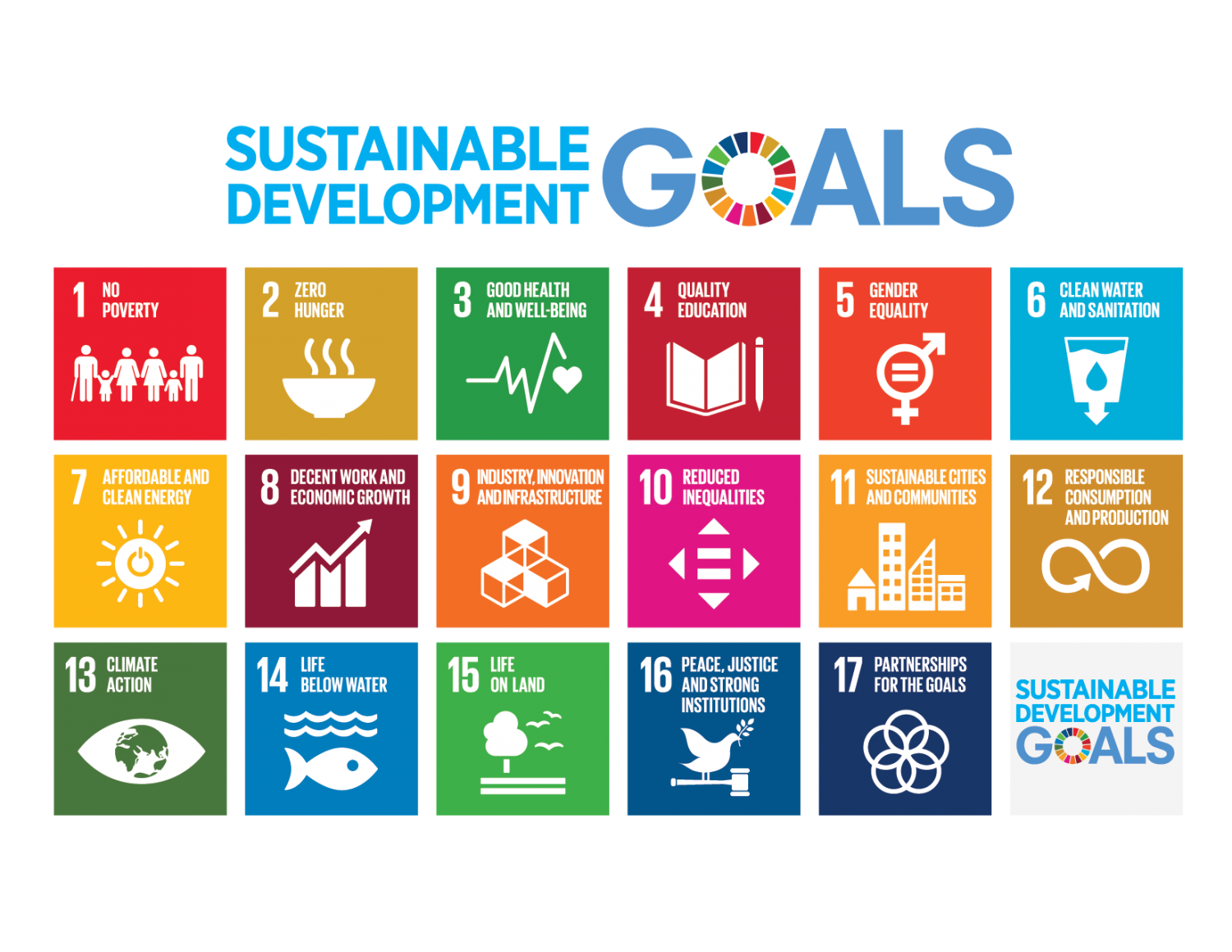
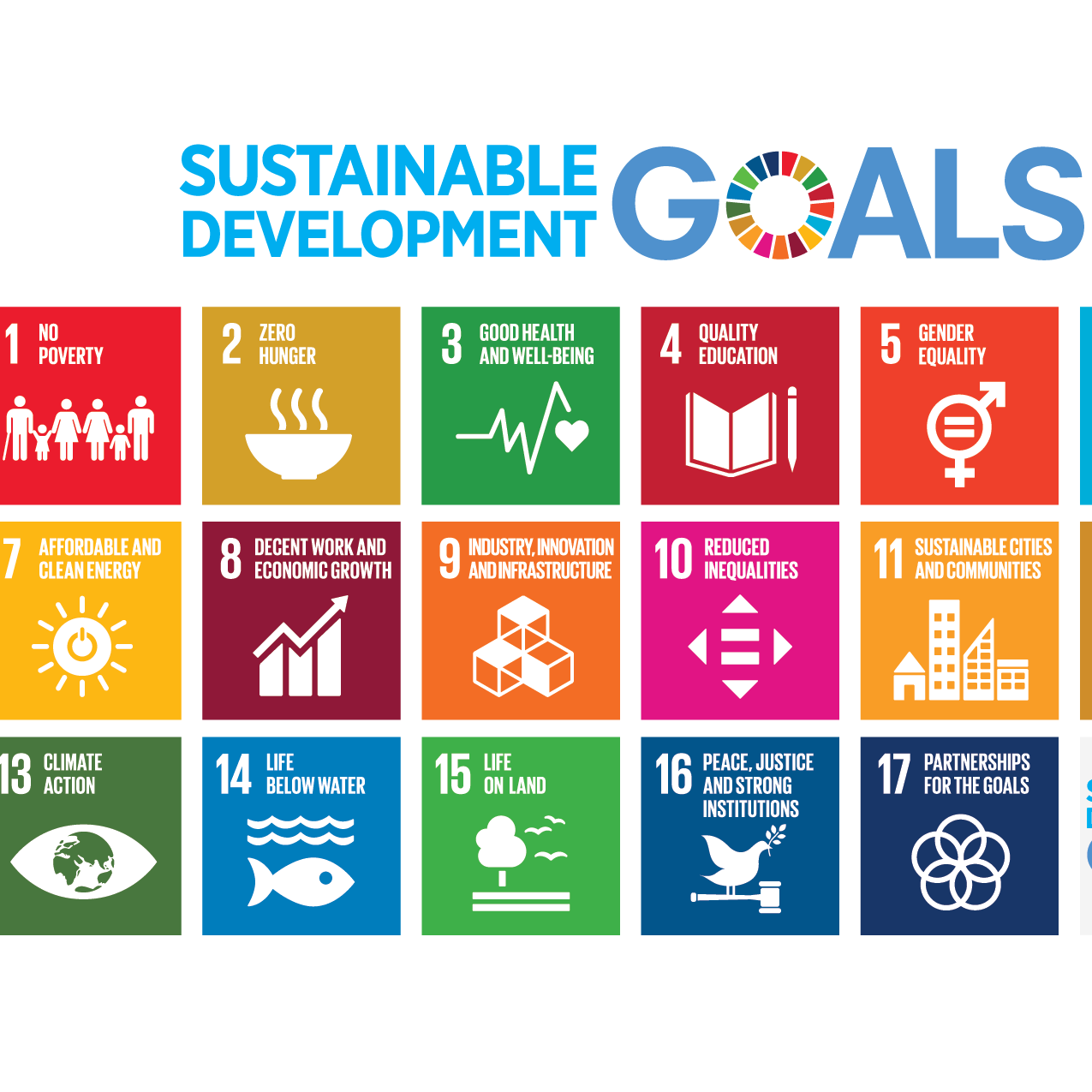
By Samuel Northrup
As one of the world’s largest makers of food, General Mills has embraced its role as a global leader in safeguarding human health and the environment.
To better convey its plans and objectives to the world, the Minnesota-based corporation, which produces and markets over 100 brands across more than 100 countries, has aligned itself with the United Nations Sustainable Development Goals (SDGs)since their ratification. The SDGs, drafted in 2016, are a set of 17 global goals and 169 targets developed to help stakeholders to push the U.N.’s 2030 Agenda for Sustainable Development.
“We really see the SDGs as providing an important global framework to create alignment and communicate on sustainability imperatives,” said Serena Pal, General Mills’ manager of reporting, rating and rankings. “We feel like each company’s approach can be a little different, and it really depends on where you are in your sustainability journey.”
Of the 17 global goals established by the U.N., General Mills has focused in on five: SDG 2, Zero Hunger; SDG 3, Good Health and Well-Being; SDG 6, Clean Water and Sanitation; SDG 13, Climate Action; and SDG 15, Life on Land. Speaking during last week’s 3BL webinar titled “General Mills' Sustainability Journey and SDGs: Connecting the Dots,”Pal explained that these five goals aligned well with existing sustainability initiatives that the corporation had started years before.
Since 2016, General Mills has furthered these initiatives by setting ambitious environmental goals, such as sustainably sourcing its top-10 ingredients by 2020, reducing GHG emissions up to 72 percent by 2050, and developing a water stewardship programwith local partners in eight “priority watersheds,” according to the company’s 2018 global responsibility report.
“As a global food company, we know that water is essential for agriculture, which we are dependent on, as well as our operation,” Pal explained. “So we have worked to create a global water stewardship plan that focuses on water usage from shed all the way to production, identifying ways to increase efficiency and conservation and continually improve our performance to enhance resiliency.”
But General Mills has not stopped there -- the company has begun incorporating work with the SDGs as part of its Global Reporting Initiative (GRI) index, including them in its 2018 responsibility report.
“We know that changes in climate affect global food security but also impact, as a food company, our raw material supply,” Pal said. “Ultimately, this influences our ability to deliver products to consumers and operate as a company.”
Connecting SDGs with the GRI framework has allowed for further streamlined disclosure of standards and practices for a corporation operating and contributing on a global scale.
“All of this is to say we really use these SDGs as a way to talk about these platforms that we are already very engaged in, and giving us that common language with which we can engage partners and governments and communities with,” Pal said.
Embracing Diversity in Media is Not Negotiable – Here’s Why
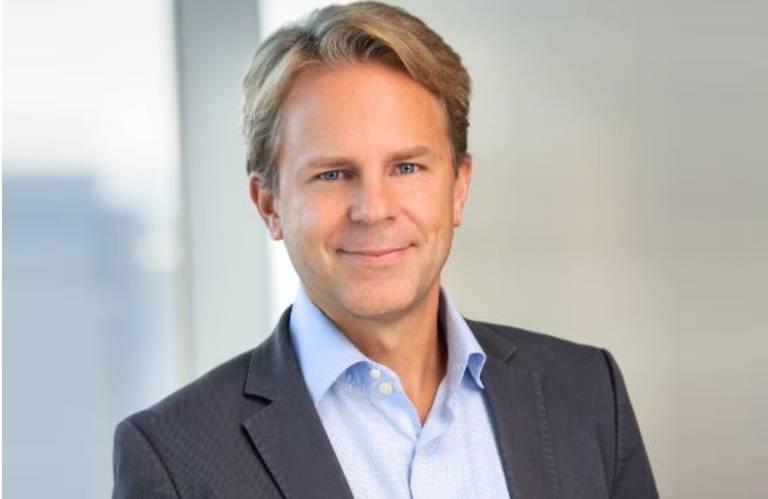

It is no secret that the media industry is experiencing an unprecedented level of disruption. This has upended legacy business models, but has also created a wave of new opportunities. To successfully navigate this changing media landscape, the industry needs bold ideas and innovative strategies brought to life by broad and inclusive talent cultures.
Our ambition for Bloomberg Media Group is to be the world’s leading business and financial media on every media platform and relevant geography, all in service of Bloomberg LP. Given the diverse nature of our businesses, I view it as my responsibility to constantly foster a team culture that is inclusive and inviting for people of different backgrounds and perspectives.
Bringing a global perspective
I was born to American and British parents, raised abroad and only came to live in the United States for the first time for high school and college. I have had the opportunity to live in many different countries including China, France, England, Indonesia, and Burkina Faso in West Africa. Around age fourteen, I became fascinated with Mandarin, studying the language and learning to write traditional Chinese characters.
Having spent my early career abroad, I found it challenging to integrate myself into American culture when I returned to New York for my first US-based role. Even though I was born an American citizen, living abroad for most of my life gave me a global perspective from the start. It’s something I came to cherish as I transitioned into American culture and into the largest media market in the world.
Becoming a bridge to Bloomberg’s Communities
My life experiences have instilled in me a deep appreciation for the power of diversity in making organizations richer and stronger. I believe that it’s an essential truth that when different perspectives are brought together, the end result is substantially greater. In charting a course through a changing media landscape, we need to be radically open to new ideas and approaches. What works well in one country or on one media platform may not work in others.
This belief has reinforced my commitment to diversity at the highest levels of our corporate mission and serves as my motivation to become actively involved in our communities at Bloomberg. As the Executive Sponsor of Bloomberg’s Pan-Asian Community, our mission is to develop and retain Pan-Asian talent, highlighting the diversity of this culturally rich region, and inspire employees to continue to expand the company’s footprint in the global Asian professional business community.
Diversity & Inclusion efforts and employee resources groups, like the Pan-Asian Community, are critical to ensuring we have the right people in place to support the long-term success of our company. We can’t continue to turn to the same voices every time. No company, let alone a media company in search of new models and approaches, can afford a culture where people instinctively shoot down diverse, challenging ideas and “off-the-wall” concepts.
Setting the tone from the top
People do their best work in companies where they are happy, where they feel fulfilled and where they feel respected. People want to feel connected to their work and to the mission of their organization. Leadership is about creating these types of environments where people can thrive and do their best work.
We are social creatures, and we are most effective when we’re all working together to achieve great things that advance the collective cause. A leader’s role is not only to map out the strategy, but to set the tone for the entire enterprise.
In assessing a leader’s ability, we have to look not only at what they do, but how they do it. Do they lead from the front? Do they roll up their sleeves? Do they model the type of behavior essential to creating a work culture that is not just successful and efficient, but also inclusive and tolerant, where respect and selflessness are valued?
Leaders have to do this work day in and day out. It’s not enough to talk about what you want the company to be — you must represent it.
As someone who has watched news and media radically change, I have come to understand the strength of having a variety of voices at every level of an organization. Media organizations must be open to change and uncertainty, and be comfortable in a place where we’re constantly incorporating new perspectives and challenging the status quo. I see this as our primary responsibility and the only way for our business to continue to be successful in the future.
Justin B. Smith is Chief Executive Officer of Bloomberg Media Group. He is also the Executive Sponsor of Bloomberg’s Pan-Asian Community.
Originally published on Bloomberg.com and distributed by 3BL Media.
Photo: Bloomberg
Bloomberg reports on sustainability and environmental progress

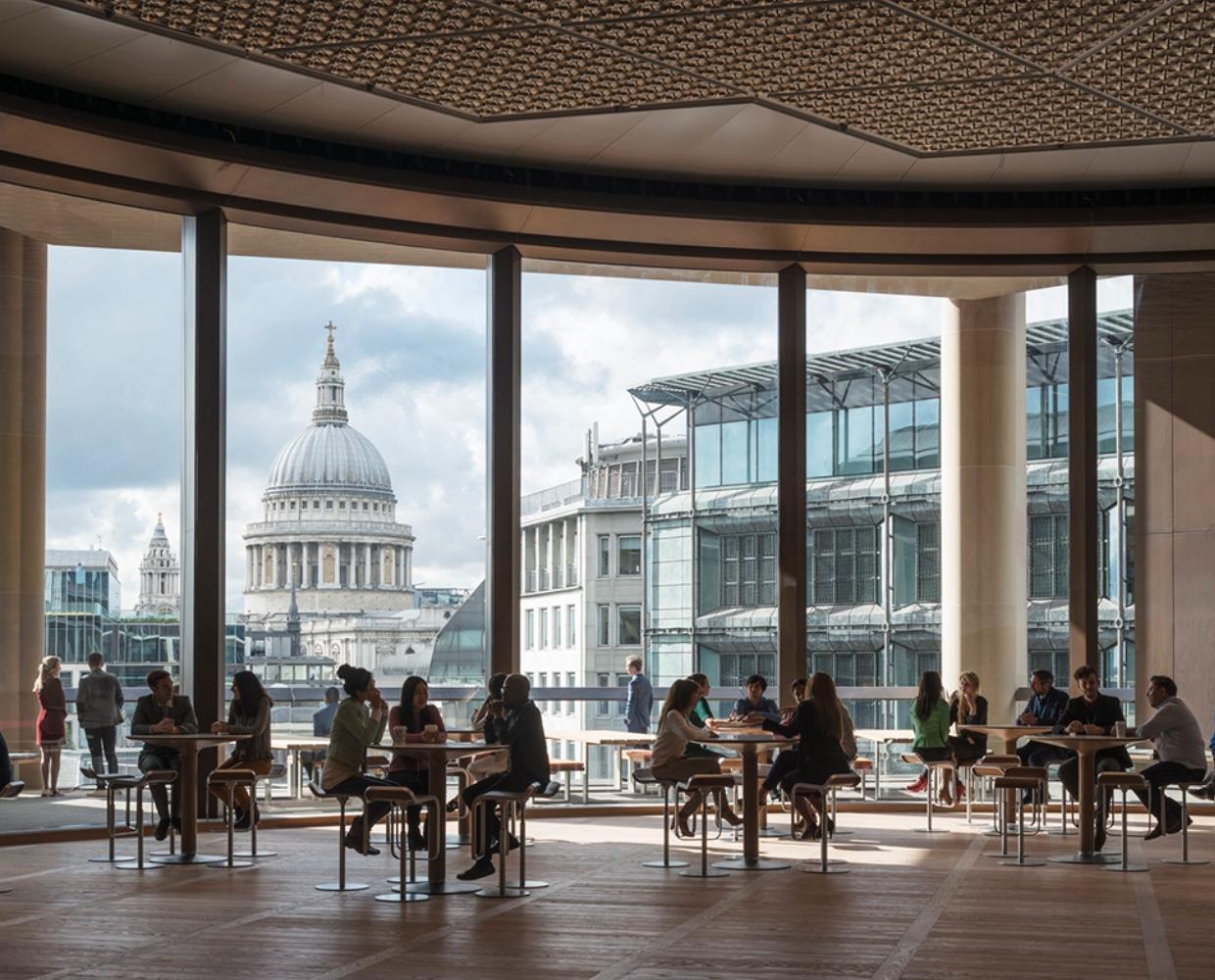
Bloomberg L.P. reports that its new European headquarters in London has been awarded the world’s highest rating for large office development by a respected UK evaluation consultancy.
The headquarters was given a 98.5 per cent score under the environmental assessment method of the Building Research Establishment, the building science centre based in Hertfordshire.
During the past year, five new offices were also given the Leadership in Energy and Environmental Design certification, the US green building standard.
The awards were among the sustainability and environmental achievements listed in the company’s 2017 impact report.
Bloomberg, the US global business and financial information and news provider, records that in the past nine years 834,209 metric tonnes have been cut from its worldwide carbon dioxide emissions through efficiency and environmental measures.
It calculates that in addition these policies reduced operating costs by $103m (£77m, €88m).
As an information source it reports that nearly 15,000 customers used environmental, social and governance data offered by the Bloomberg Terminal, its computer software system giving financial facts – 22 per cent more than in 2016.
Bloomberg says its focus on people was represented in its gender-equality index, which became sector-neutral last year so that its data survey was opened up to companies in all industries. As a result membership doubled in one year to 104 businesses from ten sectors with centres in 24 countries and regions.
Its people policy was reflected further in its staff volunteer service. Last year more than 12,000 employees in 92 cities worldwide gave 145,000 hours to help communities and protect the environment.
Curtis Ravenel, global head of sustainable business and finance, said: “At Bloomberg we have been a long believer that sustainable business is good business, and our impact report continues to emphasise how we are proving the business case for sustainability.
“More disclosure on how companies will be affected by climate change will help investors make more informed decisions.
“We’ve led the work on the TCFD [Task Force on Climate-Related Financial Disclosures formed by the G20 Financial Stability Board] and set an example by adopting TCFD recommendations in our impact report.”
Experimental Solar Road In Georgia Is Paving a New Way


By Monica Medina and Miro Korenha
The first solar roadway in the U.S. debuted on an 18-mile stretch of I-85 in southwestern Georgia. It's called the Ray C. Anderson Memorial Highway, and the asphalt is a living laboratory now known as The Ray -- it offers a vision of how highways could look and function in the future. A small section of the roadway leading to the Visitor's Center is paved with solar panels and serves as a testing ground for solar roadway technology. It also houses the state’s first solar-powered PV4EV (photovoltaic for electric vehicle) charging station, and that opens up the length of I-85 between the Alabama border and Atlanta to electric vehicles. In addition, this fall thousands of solar panels will line the roadside of the interstate, and Georgia will become the third state in the nation to pilot a so-called “right of way” solar farm. Highways generate 5 million tons of CO2 emissions nationally each year and there were 35,000 fatalities on them in 2015 alone.
The Ray's goal for all highways s simple: zero deaths, zero carbon, and zero waste. Grasses and plants on the side of The Ray provide pollinator habitat (as we reported this week bees currently lack habitat), carbon sinks, and soil stabilization. They have also installed a roll-over WheelRight Tire Pressure Monitoring System at the Visitor's Center that sends drivers a text message with critical information about their tire pressure & tread depth, which improves both gas mileage and safety on the road. And they are developing solar-powered, lighted and smart "dots" on the highway to warn drivers of hazards and collect important data for the Georgia Department of Transportation to maintain the road.
Why This Matters: The Trump Administration and Congress continue to promise ambitious infrastructure plans, and investments in roads and transportation will certainly be included. Hopefully, road projects in the future will incorporate these new technologies to make our highways safer and more sustainable. Looking ahead, Allie Kelly, the Executive Director of The Ray says, “We’re at a tipping point in transportation.” Kelly believes that “[i]n five to ten years, we won’t remember a time when we invested a dime in infrastructure spending for a road that only did one thing.”
Monica Medina is Founder and Publisher of @OurDailyPlanet. Miroslava Korenha is Creator / Writer of @OurDailyPlanet.
Originally published on Our Daily Planet and distributed by 3BL Media.
Photo: Ray C. Anderson Foundation
Impact at Work: An Interview With Tim Smith From The Boston Foundation and Pledge 1% Boston

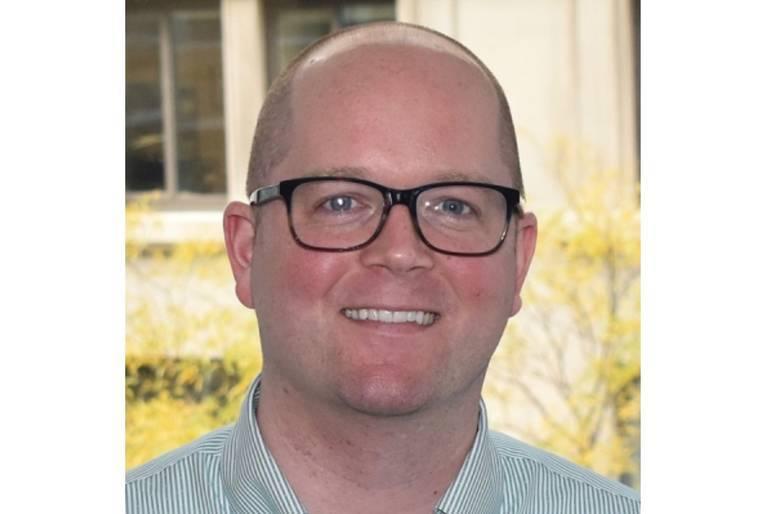
By Lauren Chasanoff
Another one of our favorite communities of practice is the Pledge 1% initiative, pioneered by Salesforce.com. Pledge 1% is a global movement that encourages and challenges both individuals and companies to Pledge 1% of equity, profit, product, and time for their communities. I had the exciting opportunity to speak with Tim Smith, Head of Pledge 1% Boston and Senior Director at The Boston Foundation (pictured) to learn about the newest trends in philanthropy and the unique role he plays in driving change in his local community.
What has been the most rewarding part of your career so far? What has been the most challenging?
These pieces are related so I’ll start with the most challenging. I am originally from Boston, but spent a decade in San Francisco where I ran a venture philanthropy foundation and established a strong network in the area. A few years ago my parents had unfortunate health issues and it was imperative that I find a way back to Boston. I had lived away from Boston for 11 years and returned with the daunting task of recreating my network from scratch. I’ll admit that at first, I wasn’t super optimistic about finding a role in Boston that was as innovative as my last position given Boston’s traditional nature. However, I came to realize that San Francisco and Boston are more similar than in the past, and that in the time I had been away, a lot of new programs and philanthropic entities had taken hold in the city. Relatedly, I helped get Pledge 1% off the ground in the Bay Area and saw firsthand how fast it was taking off in that market. It was obvious that Salesforce CEO Marc Benioff had strong networks in the Bay Area he could leverage. But Pledge 1% didn’t have a footprint in Boston yet, so building the right structure, movement and people behind it was imperative.
On the flip side, the most rewarding part has been going from not having a network to conceptualizing a program, getting the right stakeholders in line, launching it and becoming successful all in two years’ time. It was all about building my network by going to events, making connections, and allowing myself to be vulnerable in a new city.
What are the newest trends in cross-sector CSR and philanthropy you see from your vantage point?
The number one trend is efficiency. Companies used to make grants here and there and sponsor events, but now they are focusing on creating deep, multi-year partnerships with fewer nonprofits. They are looking at how funding can be amplified by employee time and product donation, and how their employees can give back along all of these different dimensions.
Companies are also working together through funder collaboratives, where a leading entity might define an issue in the community and, instead of one company taking the lead, they leverage the support of community foundations or philanthropic organizations. This approach is less focused on a company’s individual brand or funds, and more about the overall impact. On the nonprofit side, nonprofits are starting to understand that companies are only a small piece of the funding pie and that there is value in individual cultivation.
From your experience at The Boston Foundation, how do you think the next generation is shaping philanthropy within the corporate sector and making it a core part of business? How do you see this change take place within the nonprofit sector?
Social impact is now ingrained in most founders of companies – either they themselves are learning the importance of respecting and connecting with their communities or they are realizing that is what people coming into the workplace are looking for in their roles. Corporate leaders are embracing the mixed motive – impact on the community, attracting/retaining top talent, and elevating the brand of a company. It is a no-brainer to give back whether that be through money, time or product. This work used to be driven by employees, but now begins with leadership and reverberates through the whole business.
From the nonprofit angle – it is a bit overwhelming to navigate what to spend time on, and companies have to be respectful and effective with the time they ask of nonprofits. Additionally, there is a huge trend towards online giving through fundraising campaigns like Giving Tuesday and a movement of next-gen nonprofit champions.
How has Pledge 1% brought professionals and organizations together from different backgrounds and experiences within the Boston area? What is a key lesson you've learned from launching the local initiative?
The great thing about Pledge 1% is that companies are not committing their equity to a specific nonprofit or cause – they are setting it aside and committing to be part of the movement. Pledge 1% is a safe space for leaders to learn about social issues and philanthropy together -- without there being a monetary ask right now. The biggest lesson is that there is no benefit in recreating the wheel. It has been extremely helpful to leverage the global brand and look to companies in other markets that have doing this work well and telling their stories. We’ve also gotten the investor community behind this work, which established credibility and accelerated our success.
Lauren Chasanoff is Senior Manager, Marketing, Common Impact
Photo: Common Impact
Originally published by 3BL Media
For Healthy Soil, Wrangler’s Sustainability Practices Go Beyond Just Jeans

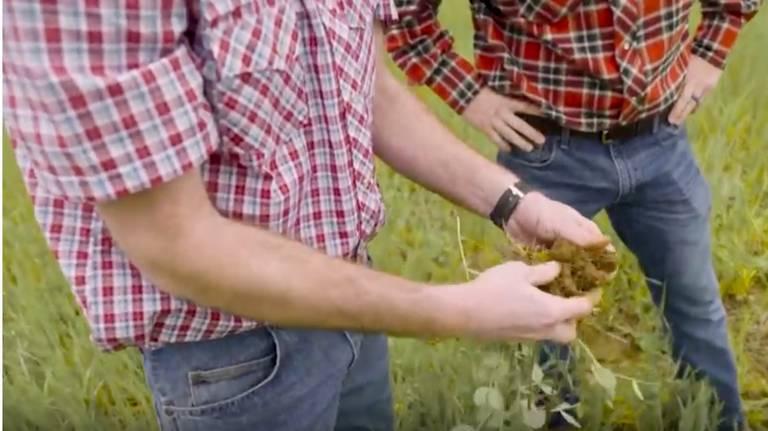
By Samuel Northrup
We all have our favorite pair of jeans—you know, the ones that you wear the weekend or to casual day at the office. But, have you ever stopped to wonder about how the cotton comprising your prized dungarees was grown and sourced?
One of the largest manufacturers in the denim apparel space wants you to know.
Healthy soil is at the center of all cotton-based products, so Wrangler went back to the drawing board to help its supply chain of U.S. growers produce sustainable cotton.
“We’re seeing changing consumer preferences from millennials, Generation Z and from emerging consumers,” said Roian Atwood, director of sustainability for Wrangler. “So, I think those are important signs that times are changing and we need to adapt and, ultimately, build more sustainable products and tell the story around it.”
On Earth Day 2018, the denim giant elaborated its strategy to conserve and promote the health of its producers’ fields, starting with three key practices: implementing cover crops to naturally increase soil nutrients; conservation tillage to reduce land disturbance; and crop rotation to better manage disease and pests.
According to the first volume of the company's science and conservation papers, “Seeding Soil’s Potential,”the results can lead to reduced costs for growers, higher crop yields and higher soil and water retention, creating a clear benefit for growers and their most valuable asset.
“Their motivations, while they first appear to be economic, they often think about leaving healthy soils to future generations,” Atwood said. “The growers that we partnered with, they see their soils as almost a bank account for their future, [so that] family members will continue to work the land, and a bank account of nutrients for a healthy, biological community.”
The soil health initiatives are part of a long-term plan -- which takes into account the demands a rapidly growing human population puts on global farmlands and waterways. It is a plan that leads Atwood to envision an agroforestry approach that causes minimal damage and repairs farmland, like a “living, biological ecosystem.”
“Our growers are really trying to advance this continuous improvement to create a better world in agriculture, and there’s a lot of amazing technology that is being disseminated right now that is going to change our agricultural growing systems,” Atwood said. “They’re in the middle of their own ‘dot-com revolution.’”
Now, the company is engaging customers to tell an impactful story—their favorite pair of jeans don’t begin and end in the store, they start from the ground up.
The strategy, Atwood explained, favors conveying the human element behind the growers and the sustainable cotton they produce, as opposed to other data-centric methods being explored by players in the agriculture industry. This idea culminated in a 60-second short posted to YouTube prior to Earth Day.
“Part of it is people just do not understand agricultural systems and how they work, the challenges that growers face and what is the ‘business as usual’ versus this new land stewardship practice and the meaningful difference,” Atwood said. “It’s a lot to convey in 60 seconds, but we challenge ourselves to try, and we put that message out there and continue to advocate for this platform.”
Photo: YouTube / Wrangler
Scotland's New Offshore Wind Farm Aims At Global Impact
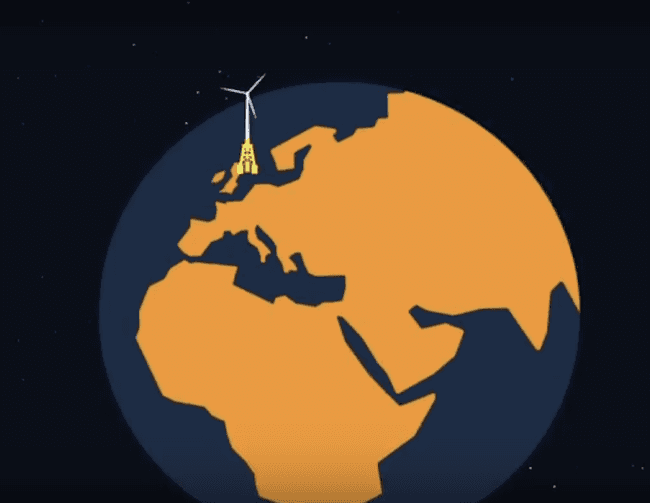

Scotland is in the vanguard of the global offshore wind industry, so it's no surprise that the country just announced that it has put a new wind farm into operation. This one is special, though. The new Aberdeen Bay wind farm is the centerpiece of EOWDC, the country's new European Offshore Wind Deployment Centre.
At only 11 turbines, Aberdeen Bay is a relatively small wind farm but it has garnered an outsized share of media attention. That's partly because EOWDC aims at having an outsized impact on global offshore development, by new technologies and strategies for driving down costs and reducing environmental impacts.
As for the the other part, well, let's get to that first.
Donald Trump vs. offshore wind
Sweden's Vattenfall company is the developer of EOWDC, and the firm took a polite sideswipe at that "other part" in a press release announcing the commencement of operations:
Gunnar Groebler, Head of Business Area Wind at Vattenfall, says: “The fact that EOWDC now can start delivering electricity after a very short construction time is satisfactory. A sincere “thank you” to all people involved, both from Vattenfall and from our partners for making it happen. Now Vattenfall is given the opportunity to continue to push forward the development of tomorrow's wind power technology, thus helping our customers to live fossil-free within a generation.”
As Groebler pointed out, EOWDC was constructed very quickly -- once it got under way. Work on the onshore facility officially began in October 2016 and installation of the turbines began in March of this year.
That's actually the happy ending to a much longer story. Planning for the offshore site began in 2003 and development rights for EOWDC were awarded in August 2010, almost six years before construction began.
By 2010, however, a battle was already brewing between the wind farm plans and current US President Donald J. Trump's plans for a new golf resort in Aberdeen.
Trump purchased the Aberdeen property in 2006 and claimed the turbines would spoil the view. He sued to prevent construction, virtually guaranteeing that the offshore project would receive regular attention from media in Scotland and the EU as the legal action unspooled.
The case was finally all but won -- by Scotland -- in 2015, but legal issues related to the golf resort continued to play out, and the media spotlight heated up after Trump won* the Oval Office in 2016.
The courtroom battle continued through to Trump's inauguration in January 2017. In August 2017 Scotland's environmental agency raised a new obstacle to expansion plans for the golf resort, sparking another round of attention from the media.
As of this writing it appears that Trump has no legal cards left to play, but stay tuned for more on that.
Scotland's new offshore wind wind test center
The environmental angle brings up important point about global offshore wind development and the new EOWDC.
The central goal of EOWDC is to drive down costs, and to a great extent that will have to do with technological innovation.
Another significant cost factor has to do with environmental issues. In that regard, EOWDC is also tasked with studying marine life at the offshore wind farm including dolphins, salmon, sea trout and sea birds.
The investment in environmental studies is significant:
Believed to be the largest research programme of its kind, and one which will put Scotland at the industry forefront of research and development, the programme will fund in-depth scientific research and monitoring in a real-time environment.
Those findings could help reduce costs globally by helping developers avoid red flags and build public support, both of which would help reduce the risk of delays.
The new offshore wind farm also deployed an innovative strategy for reducing impacts on wildlife during the construction phase:
The technology for building the foundations of the turbine towers is new. Instead of using traditional monopiles (hollow steel tubes), a new technique has been used at Aberdeen Bay; so-called suction buckets. The method is basically silent and therefore the disturbance of wildlife at sea are minimized.
According to Vattenfall, the two 8.8 megawatt turbines at Aberdeen Bay set a new record for largest capacity in the world. With a single turn of the rotor, they can produce the equivalent in electricity to power a typical household for one day. The other nine turbines at the site are rated at a lesser but still impressive 8.4 MW.
Vattenfall expects the new wind farm to generate the equivalent of electricity for 80,000 households annually in addition to serving as the foundation for research projects.
Whither US wind power?
Despite his tooth-and-nail fight against offshore wind in Scotland, President Trump seems content to let the US wind industry flourish.
His pick for Secretary of Energy was former Texas Governor Rick Perry, who shepherded his home state's wind industry in to a leadership position in the US. As Energy Secretary, Perry has continued to be a consistent champion for his agency's renewable energy mission, despite toeing the Trump line on fossil fuels.
The US offshore wind industry has been slow to take off, but in one especially interesting development the Energy Department has just launched a new public-private R&D consortium aimed at propelling the US offshore wind industry out of its doldrums (including politically induced doldrums, for that matter).
The new consortium is a landmark development in US energy history, as it is the first consortium of its kind to be supported by the federal government.
Last month the New York State Research and Development Agency won the Energy Department's competitive award to spearhead the new consortium. New York is eagerly looking forward to $6 billion in wind-related economic activity in the coming years, so stay tuned for more on that score.
Image (screenshot): via YouTube courtesy of Vattenfall.
How the GDPR Impacts Corporate Responsibility
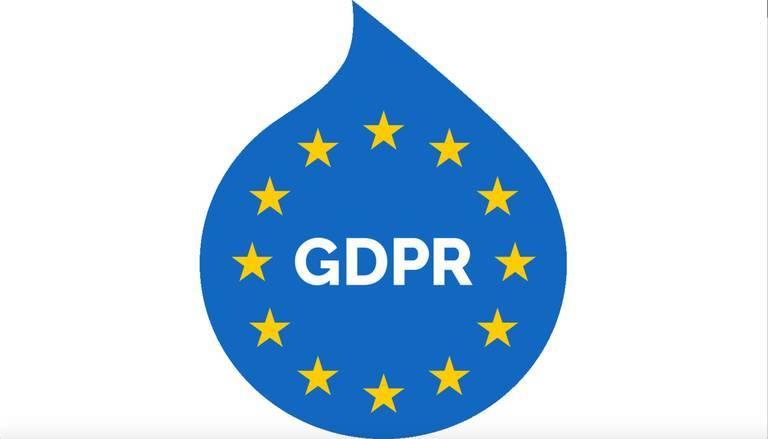

By Cecily Joseph
On May 25, the European Union’s General Data Protection Regulation (GDPR) became enforceable. Regardless of where you live, you’ve likely received numerous emails from companies providing tech-based apps and services you use, informing you that they have made updates to their privacy policies and asking you for your consent to remain on their data base so that they can continue to send you information about their products and services. That’s because the GDPR applies to all companies processing the personal data of individuals in Europe, regardless of where the company itself is based.
The GDPR was designed to increase privacy and confidentiality, and it provides individuals in Europe with the right to better control their personal information, including medical records, bank statements, and Internet searches. While this regulation has greatly impacted the privacy practices of companies across the globe, it is also shaping corporate responsibility programs.
I interviewed Gerard Chan, Symantec’s VP of Legal and head of our Global Privacy Office, to discuss how the GDPR is changing the relationship between privacy and corporate responsibility.
CJ: In 2015, the UN Human Rights Council highlighted in a resolution on ‘the right to privacy in the digital age’ that new technologies could make it easier for corporations and governments to track people and read their messages. At Symantec, data privacy has always been a pillar of our corporate responsibility program. As the head of Symantec’s Global Privacy Office how does your work intersect with corporate responsibility including Symantec’s human rights initiatives?
GC: Symantec takes seriously our duty to protect personal data and we have safeguards in place to ensure that personal information is collected and used in appropriate ways. We’ve seen that keeping personal data confidential and secure can help prevent human rights violations by protecting vulnerable individuals and communities.
If misused, personal information, like location from a GPS signal or phone conversations and texts, can put people at risk. Think about journalists, dissidents, activists, and others whose information could be seized by an authoritarian government. Even in countries without such concerns, sharing sensitive personal data, such as race, religious beliefs, or electronic medical records could lead to discrimination. For these reasons and many others, we know it is our duty to protect the personal data we have access to.
CJ: How does the EU’s new regulation, the GDPR, change or increase privacy?
GC: I’d like to focus on three of the bigger changes. The first is that the GDPR gives individuals in Europe the right to be forgotten – that is the right to have businesses erase their personal data entirely.
The second is that in more circumstances than before, the regulation will require companies to obtain individuals’ informed and specific consent to the processing of their data. In such cases, companies will have to ask the “data subjects”, as the law calls these individuals, to give genuine and free consent before starting to use their personal data. And for the consent to be valid, the data subject must be clearly informed about how their personal data will be used, shared, and stored.
The third is the one that affects companies the most. The GDPR aims to embed data protection in the design stages of products and services, requiring what we call “privacy by design”. This means that privacy and data protection safeguards must be built into products and services from the earliest stage of development, and in many cases they must be enabled and even set to the maximum level of protection and confidentiality by default.
CJ: Do you feel that the GDPR well help better protect human rights?
GC: We are living in a digital world where data can reveal private details about our lives— our thoughts, beliefs, movements and activities. The GDPR is one of the first legal acts to require that digital rights, like the right to privacy, be systematically incorporated into all business operations. The regulation isn’t perfect, but it strengthens protections for privacy and data protection in the European Economic Area and attempts to limit invasions into people’s lives through data, which is critical for human rights today.
The regulation also guarantees some protections from decisions based on profiling and computer-generated decisions. Some organizations including commercial companies and public authorities use algorithms to make decisions about whether a person qualifies for various benefits or opportunities, such as health insurance, credit, or a job. The GDPR is designed to help prevent discrimination and provides a new layer of protection. It gives individuals the right to have a human review any such automated results.
CJ: This sounds like a big shift in the privacy landscape, but will companies all comply? How will the GDPR be enforced?
GC: Penalties for violating the GDPR are enforceable under European law, in some cases even with an international reach. Administrative fines can be as high as €20 million or 4% of annual global revenue, whichever is greater. This really highlights the significance that the EU is placing on data protection and privacy and we’ve seen that companies are taking compliance very seriously. As you’ve likely seen in the news Facebook, Google and others are already facing lawsuits for non-compliance, and the stakes could be worth billions of dollars in potential fines.
Aside from financial penalties, businesses can also receive orders to stop processing data if they don’t comply or violate individuals’ privacy, making it hard for them to operate. This penalty could end up being an even bigger reason to comply with the regulation.
CJ: How can people reading this learn more about our programs?
GC: Symantec as a company took the necessary steps to ensure we were prepared for GDPR compliance. We’ve also created a new privacy portal, which includes information on how Symantec is safeguarding people’s privacy.
Cecily Joseph is VP, Corporate Social Responsibility, Symantec
https://www.symantec.com/about/customer-trust-portal
Originally published by Symantec and distributed by 3BL Media
https://www.symantec.com/blogs/corporate-responsibility/crandgdpr
https://3blmedia.com/News/How-GDPR-Impacts-Corporate-Responsibility
Photo: Drupal
https://www.drupal.org/files/project-images/gdpr-logo.png
VW's Electrify America Gets Ready to Charge Up U.S. Cities

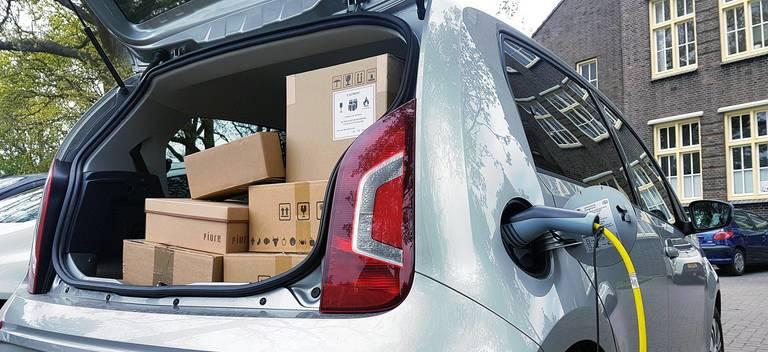
Very rarely, good things have been known to come out of devastatingly bad company decisions. Such is the story of VW's court-negotiated Electrify America program, which is about to transform the country's electric vehicle charging infrastructure.
Electrify America, (EA) which was designed with the needs of electric vehicles in mind, is the result of the Volkswagen "defeat device" scandal that rocked the automotive industry in 2015 and 2016 and, with the exception of sales in China, is still continuing to steer the company's recovery. Negotiations between VW and the California Air Resources Board (CARB) eventually led to a new subsidiary that would oversee the installation of some 500 charging stations across the United States.
The decision dovetailed with California Gov. Jerry Brown's vision of the state's up-and-coming green transportation, which lacks adequate charging stations. It was the "perfect" answer to a scandal that significantly impacted the reputation of green transportation and, at the same time, could put a company that had inside knowledge of environmental-friendly automotive systems in the driver's seat of new technology. After all, for Californians to really take advantage of electric transportation, they needed to be able to go somewhere -- including outside of their state. And there was no one better suited to expedite the construction of hundreds of charging stations than a company that truly understood the challenges associated with new goal.
Ergo, the Electrify America charging network was born.
Last week EA announced that it had been tapped U.S.-based companies to construct its ultra-fast DC charging stations. Engineering, renewable energy and construction specialist Black & Veatch and SAI, well known for its civil and commercial construction accomplishments, will install the 2,000 stations.
More than 400 sites have been designated to receive s charging station on this first leg, with an anticipated completion date of June 2019. EA states that they are designed to be "close to retail, dining and other facilities that offer convenience for EV drivers … "between four and ten 150kW and 350kW individual DC fast chargers at each location before June 2019."
In May the company published a map of the planned construction, which traces some of the continent's most-traveled routes. It connects cities like Boston, Miami, Seattle, Fresno and Los Angeles, promising EV drivers what they have always wanted: unfettered access to “free” electricity tank-ups.
The two contractors will divide up the designated routes, with Black & Veatch covering installations in 24 states including California and the Pacific Northwest region, while SAI will cover 16 other states, including those remaining ones in the Southwest. Between four and ten chargers will be installed at each location.
EA said the $200 billion project is part of its wider effort to educate the public about its zero-emission vehicles (ZEV). According to the organization, half of all Americans have never heard of ZEVs and only about a third have ever looked into purchasing one. The result, says EA, is that ZEV market share is less than 1 percent of the national EV market.
“Electrify America will tackle this challenge head on and intends to develop and deploy a national awareness and education campaign directed at car buyers not yet in EVs,” the organization said. It intends to do that not only by establishing charging stations but by launching a series of “brand neutral” public relations programs aimed at getting drivers to test-drive electric vehicles.
Flickr image: www.routexl.com
Four Million American Anglers Mobilized in Crowdsourced Effort to Collect Data and Trash from U.S. Waters This Independence Day
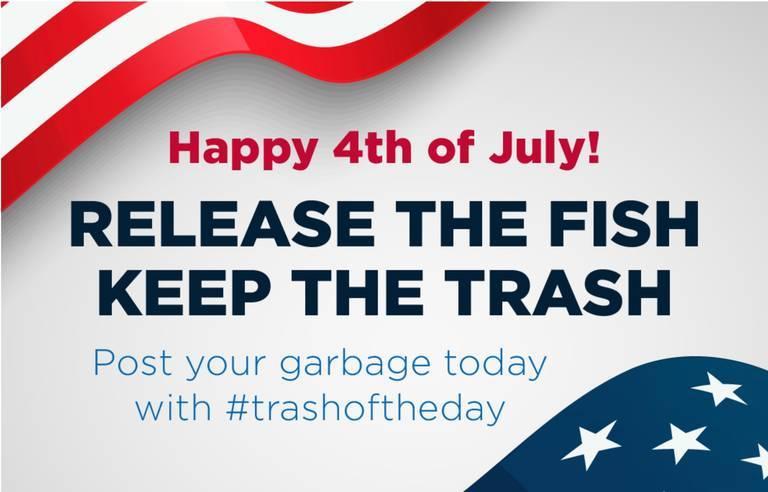

This Independence Day, Wednesday, July 4, 2018, Keep America Beautiful, the nonprofit steward of litter prevention for more than six decades, is partnering with Fishbrain, the world’s most popular mobile app and social network for people who love fishing, to ask the app’s over 4 million US users to undertake the largest-ever one-day crowdsourced audit of litter in the US.
The collaboration between Keep America Beautiful and Fishbrain, which was inspired by users removing and photographing trash during their everyday angling, harnesses the popularity of fishing on the Fourth of July, a day when anglers traditionally fish in high volumes. Using the hashtag ‘#trashoftheday’ and Fishbrain’s geolocation features, users of the app will be encouraged to remove littered items they encounter while fishing and upload images.
The data collected about volumes and locations of trash in America’s waterways, lakes, and shorelines will allow Keep America Beautiful to better understand the composition of litter in waterways around the country, so their nationwide teams of local volunteers can more effectively focus litter removal and prevention efforts.
Turning the tide on trash
Research from the U.S. Environmental Protection Agency suggests that almost 80% of ‘aquatic trash’ is made up of consumer goods, with the amount more than doubling between 1960 and 2013. The pollution of water by plastics has become an increasing concern throughout 2018, with further scientific research showing its detrimental effects on the environment, wildlife, and even human health.
Fishbrain users will be looking to reverse this trend through their trash-logging efforts - with users asked to keep an eye out for the following list of items (as suggested by Keep America Beautiful):
- Plastic beverage containers
- Plastic bags
- Other plastic items (e.g. plastic cups and plates)
- Bottle caps
- Plastic straws
- Metal beverage containers
- Cigarette butts
- Glass beverage containers
- Paper items
Speaking on the partnership, Johan Attby, CEO of Fishbrain, comments: “Our users love nature, and are committed to looking after the American countryside that we all treasure. With this in mind, it’s an honour to work with the folks at Keep America Beautiful to help tidy up waterways across the country. To harness technology in this way, and to engage with a community already out and about fishing on the Fourth of July, should have some beautiful consequences and we can’t wait for lots of anglers to heed our call!”
“Much of the current discussion about the scourge of marine debris is related to reducing and preventing land-based litter – and particularly plastics – from reaching our oceans,” said Keep America Beautiful President and CEO, Helen Lowman. “Our partnership with Fishbrain and its millions of fishing enthusiasts will help identify litter hot spots 'upstream,' while focusing our collective attention on keeping our waterways cleaner and more beautiful for all of us to enjoy.”
Distributed by 3BL Media.